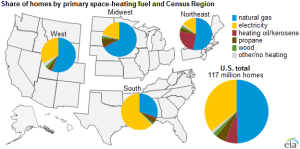Saudi Arabia Maintained Crude Market Share in Asia in First Half of 2015

In the first half of 2015, Saudi Arabia exported on average 4.4 MMbpd of crude oil to seven major trading partners in Asia, making up more than half of Saudi Arabia’s total crude oil exports over that period.
Even as global crude oil prices fell in 2014 and 2015, Saudi Arabia increased production and kept its export levels high, enabling it to maintain its market share in these countries. However, long-term trends within Saudi Arabia’s energy sector may reduce its global crude oil market share.
In many past situations where global oil markets have experienced a supply glut and relatively low prices, Saudi Arabia has adjusted production levels in an attempt to raise prices. In 2014 and 2015, however, Saudi Arabia decided to focus more on maintaining its crude oil market share among its customers, particularly in Asia, where much of the recent growth in liquid fuels demand has occurred.
From January to June 2015, total crude oil imports reported for seven Asian countries averaged 19.1 MMbpd, about 700,000 bpd higher than during the same period in 2014. The share of these crude oil imports from Saudi Arabia averaged 23.2% from January to June, compared to 23.9% in the same period in 2014. Saudi Arabian crude oil import shares were nearly unchanged in China, Japan, India, South Korea, Taiwan, and Thailand, while declining in Singapore.
Long-term trends within Saudi Arabia’s domestic energy sector in addition to competition from other crude oil-exporting nations may result in a decline in Saudi Arabia’s global crude oil market share. Saudi Arabia has invested heavily in its refining sector in an effort to reduce petroleum product imports, decrease its reliance on using crude oil for power generation, and shift toward exporting more petroleum products. With the commissioning of two major refineries in the past two years, Saudi Arabia added 800,000 bpd of refining capacity, which now stands at roughly 2.9 MMbpd.
According to data from the Joint Organizations Data Initiative (JODI), Saudi Arabia’s crude oil refinery input (the amount of crude oil processed domestically) has been gradually rising since 2014, and it reached a record 2.4 MMbpd in May before dropping in June. If Saudi Arabia continues to increase its refinery input, the amount of crude oil available for export may decline, reducing its crude oil market share not only in Asia but in other regions as well. However, with increased production of petroleum products from their new refineries, Saudi Arabia could gain market share in the distillate, jet fuel, and gasoline markets.
Competition from countries exporting crude oil can also affect Saudi Arabia’s share in Asian markets. Russia is exporting more crude oil to China and Japan and temporarily surpassed Saudi Arabia’s market share in China in May. The potential for increased Iranian crude oil on the global market could also displace imports of Saudi Arabian crude oil.
Principal contributor: Rebecca George

Related News
Related News

- Kinder Morgan Proposes 290-Mile Gas Pipeline Expansion Spanning Three States
- Enbridge Plans 86-Mile Pipeline Expansion, Bringing 850 Workers to Northern B.C.
- Intensity, Rainbow Energy to Build 344-Mile Gas Pipeline Across North Dakota
- U.S. Moves to Block Enterprise Products’ Exports to China Over Security Risk
- Court Ruling Allows MVP’s $500 Million Southgate Pipeline Extension to Proceed
- U.S. Pipeline Expansion to Add 99 Bcf/d, Mostly for LNG Export, Report Finds
- A Systematic Approach To Ensuring Pipeline Integrity
- 275-Mile Texas-to-Oklahoma Gas Pipeline Enters Open Season
- LNG Canada Start-Up Fails to Lift Gas Prices Amid Supply Glut
- TC Energy’s North Baja Pipeline Expansion Brings Mexico Closer to LNG Exports




Comments